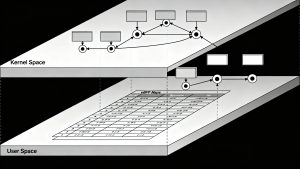Understanding Monolithic vs. Microservices Architecture
Before delving into the world of microservices, it is important to grasp the fundamentals of monolithic architecture. In a monolithic setup, the entire application operates as a single, unified entity. All business modules—such as payment processing, user authentication, and inventory management—are tightly integrated and deployed together. While monolithic architectures remain common, they present certain limitations as applications grow in complexity and scale.
Why Modern Businesses Choose Microservices
When considering the best architectural approach for a project, several factors come into play, including scalability requirements, development speed, team expertise, and the overall complexity of the system. Microservices often emerge as the preferred choice for organizations seeking greater scalability, the ability to deploy components independently, and enhanced flexibility.
The Need for Microservices: A Real-World Example
Imagine a scenario where a production issue arises in the user registration module of a monolithic application. If this module crashes, it can bring down the entire server, resulting in system downtime and significant business disruption. This situation highlights one of the core challenges of tightly coupled architectures: a failure in one module can cascade across the entire system. By contrast, a microservices approach helps mitigate such risks.
Breaking Down Modules into Microservices
Microservices architecture addresses these challenges by breaking down business modules into independent services. Each service is self-contained and can be developed, deployed, and scaled independently. For example, a typical e-commerce application might consist of the following microservices:
- User Service: Handles user registration and profile management.
- Authentication Service: Manages user authentication and security.
- Order Service: Processes order creation and management.
- Payment Service: Handles payment transactions.
Visualizing Microservices Architecture
A high-level diagram of microservices architecture illustrates how each service operates autonomously. If one service experiences an outage—such as the user registration service—other services like payment and order processing remain unaffected. This separation ensures that business operations can continue uninterrupted, even during partial system failures.
Scaling Microservices: Vertical vs. Horizontal
As user traffic increases and business grows, scalability becomes a critical concern. There are two primary approaches to scaling:
- Vertical Scaling: Increasing the resources (CPU, RAM) of a single server.
- Horizontal Scaling: Adding more instances of a service to distribute the load.
Microservices architecture typically favors horizontal scaling, as it allows organizations to add more instances of specific services that experience high demand, rather than scaling the entire application.
Managing Complexity and Ensuring Robustness
Microservices come with their own set of design patterns to ensure high availability and robust performance. Some of the most widely used patterns include:
- API Gateway: Acts as a single entry point for all client requests, routing them to the appropriate microservice.
- Aggregation: Combines data from multiple microservices before returning it to the client.
- Circuit Breaker Pattern: Prevents cascading failures by stopping the flow of requests to a failing service.
- Event-Driven Architecture: Enables asynchronous communication between services.
- Separate Databases for Each Service: Ensures data isolation and independence.
Advantages of Microservices Architecture
Adopting a microservices architecture offers several benefits:
- Team Autonomy: Different teams can own and manage specific services, streamlining development and deployment.
- Technology Flexibility: Each microservice can be built using the most suitable programming language and technology stack.
- Scalability: Individual services can be scaled independently to handle varying loads.
- Fault Isolation: Issues in one service do not affect the overall system, improving reliability.
Disadvantages of Microservices Architecture
Despite its advantages, microservices architecture is not without challenges:
- Increased Complexity: Managing multiple services introduces additional complexity in terms of deployment, monitoring, and debugging.
- Higher Costs: Setting up and maintaining a microservices infrastructure can be more expensive than a monolithic approach.
- Testing Challenges: Coordinating testing across multiple services can be time-consuming and complex.
Conclusion
Microservices architecture represents a powerful paradigm shift in software design, offering unparalleled scalability, flexibility, and fault tolerance. While it introduces new challenges, the benefits often outweigh the drawbacks for organizations aiming to build robust, future-proof systems. By carefully considering project requirements and team capabilities, businesses can leverage microservices to drive innovation and maintain a competitive edge in the digital landscape.
Read more such articles from our Newsletter here.



